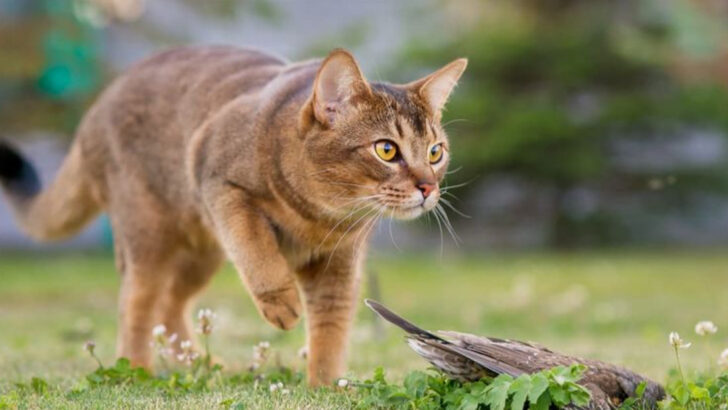Cats have long been admired for their agility, intelligence, and independence. Some breeds, however, are particularly well-suited for surviving in the wild.
These cats possess instincts, physical traits, and behaviors that make them formidable in untamed environments.
Whether through their hunting prowess, robust physiques, or adaptive natures, these feline breeds showcase what it takes to thrive outside domestic settings.
Join us as we explore 19 cat breeds that could survive in the wild with their unique characteristics and survival skills.
Norwegian Forest Cat
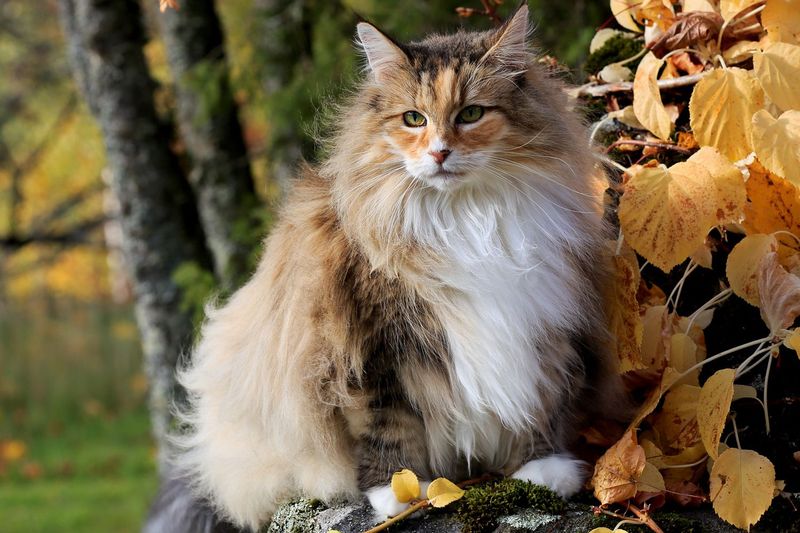
With a history rooted in the rugged terrains of Scandinavia, the Norwegian Forest Cat is a marvel of nature. Its thick, water-repellent coat protects it from harsh winters, while its strong claws make climbing trees a breeze.
These cats have a natural instinct for hunting, making them adept hunters in the wild. Their large, muscular bodies allow them to tackle prey with ease, and their tufted ears serve to keep them warm.
Known for their adaptability, they can seamlessly transition from cuddling at home to exploring dense forests.
Maine Coon
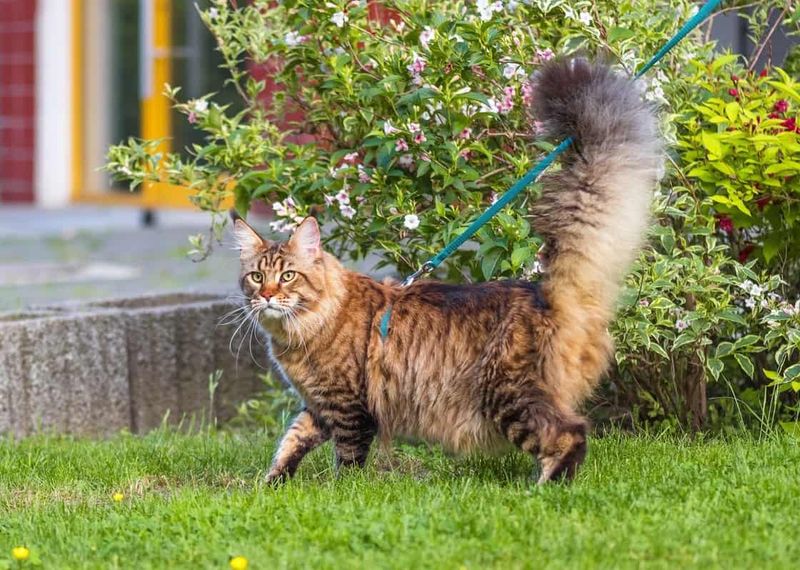
The Maine Coon, with its striking appearance and robust physique, is a natural explorer. Its semi-waterproof coat and tufted ears are designed for survival in harsh climates.
This breed boasts a friendly yet independent personality, making it a master of adaptation. Known for its large size, the Maine Coon can hunt a variety of prey and navigate through challenging terrains.
Despite their size, they move gracefully, using their bushy tails for balance. These traits make the Maine Coon a formidable presence in the wild.
Siberian Cat
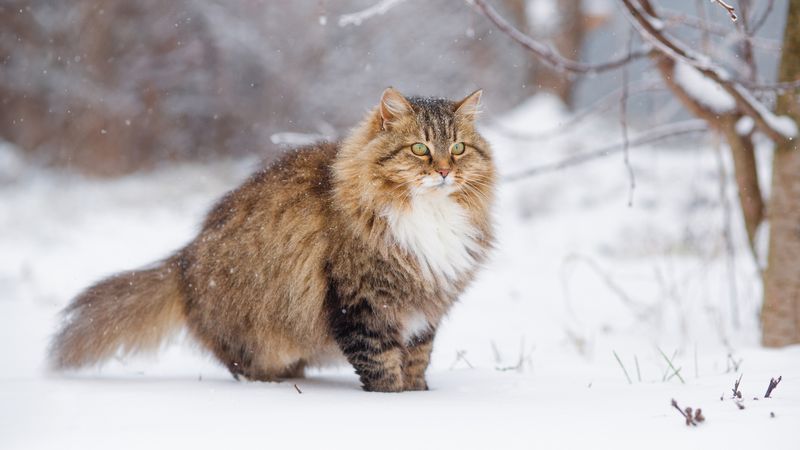
The Siberian Cat’s heritage is steeped in the frosty forests of Russia. Its dense, triple-layered coat is perfectly adapted to withstand severe cold, while its powerful muscles aid in swift movement.
Known for their agile leaps and boundless energy, Siberians are adept at hunting. Their thick fur is not only protective but also camouflages them in snowy surroundings.
Their playful yet independent nature ensures they can survive alone, relying on their wits and instincts. This breed embodies the spirit of resilience and agility in the wild.
Bengal Cat
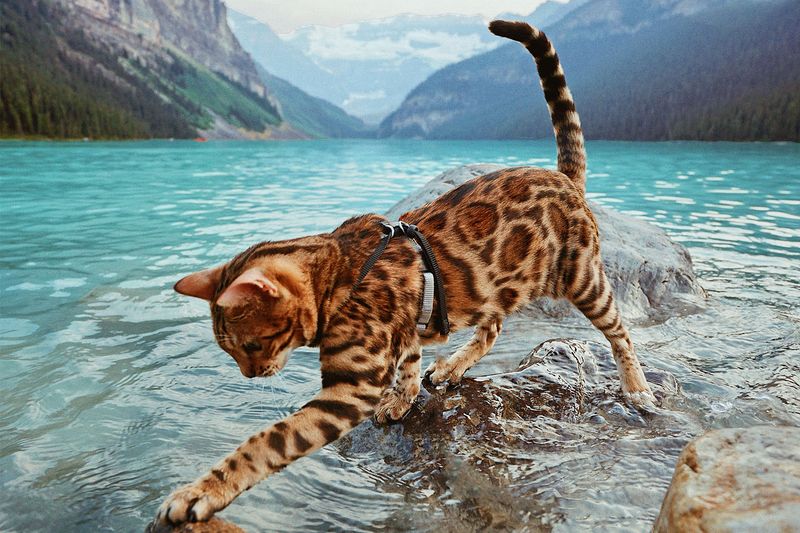
With its striking leopard-like appearance, the Bengal Cat is a born hunter. Its sleek, muscular build allows it to move with unmatched agility and speed.
Bengals are renowned for their playful and curious nature, often exploring every nook and cranny. Their short, glossy coat is not only beautiful but practical for navigating through thick vegetation.
These cats possess exceptional intelligence and problem-solving skills, making them adept at surviving in complex environments. The Bengal’s wild demeanor is balanced by its playful charm, perfect for the untamed outdoors.
Savannah Cat
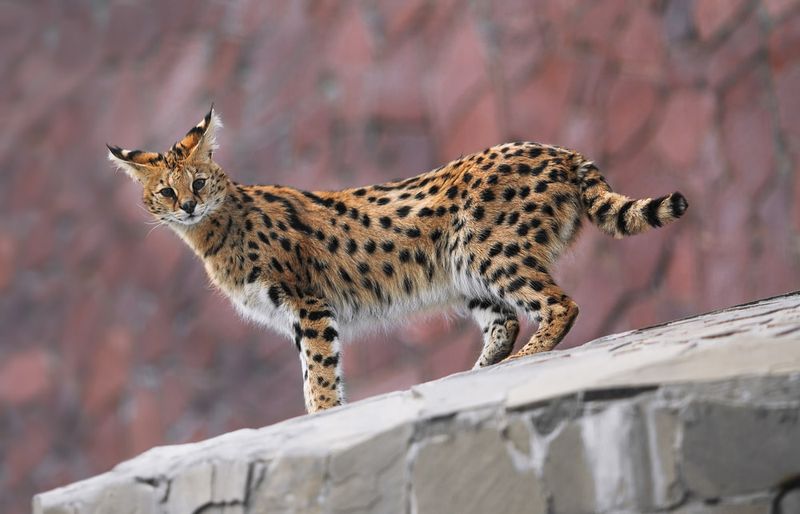
The Savannah Cat, a fusion of domestic and wild ancestry, is a sight to behold. Its elongated body and long legs allow it to sprint swiftly across open terrains.
Known for their adventurous spirit, Savannahs are natural explorers with a keen sense of curiosity. Their striking spotted coat provides perfect camouflage in the wild.
These cats possess a unique blend of domestic charm and wild instincts, making them both affectionate companions and fierce survivors. Their adaptability and intelligence ensure they thrive in diverse environments.
Abyssinian
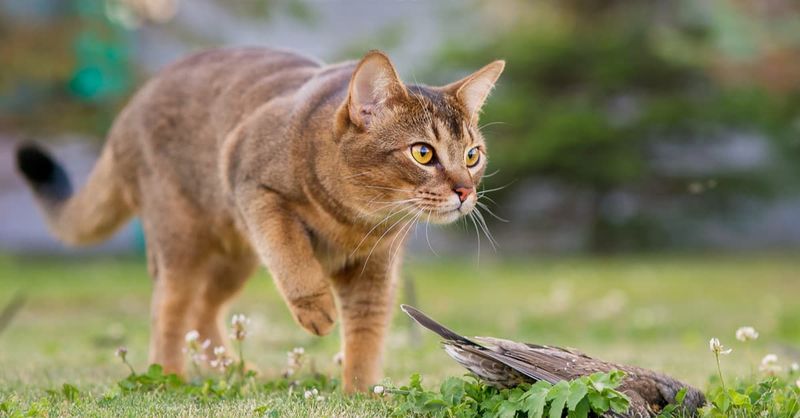
The Abyssinian, with its sleek, ticked coat, exudes an aura of elegance and alertness. Thought to have origins in ancient Egypt, this breed is agile and possesses a keen hunting instinct.
Its slender body and powerful limbs enable swift and graceful movements, ideal for navigating challenging terrains. Abyssinians are known for their playful and energetic nature, thriving on adventure and exploration.
Their intelligence and adaptability make them adept at surviving independently. This breed’s combination of beauty, agility, and curiosity makes it a true wild spirit.
Egyptian Mau
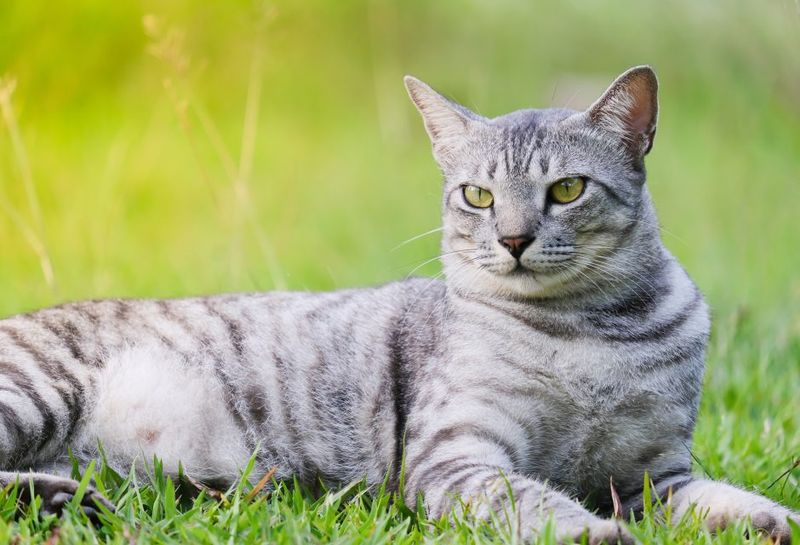
The Egyptian Mau, with its striking spots and expressive eyes, is a descendant of ancient felines. Known for its incredible speed and agility, this cat can outrun many predators or catch agile prey.
Its short, spotted coat offers protection and warmth while being an effective camouflage. The Mau’s intelligence and keen senses make it a master hunter in the wild.
Though it thrives on human companionship, its independent streak means it can survive when necessary. The Egyptian Mau is a blend of history and wild prowess.
Turkish Van
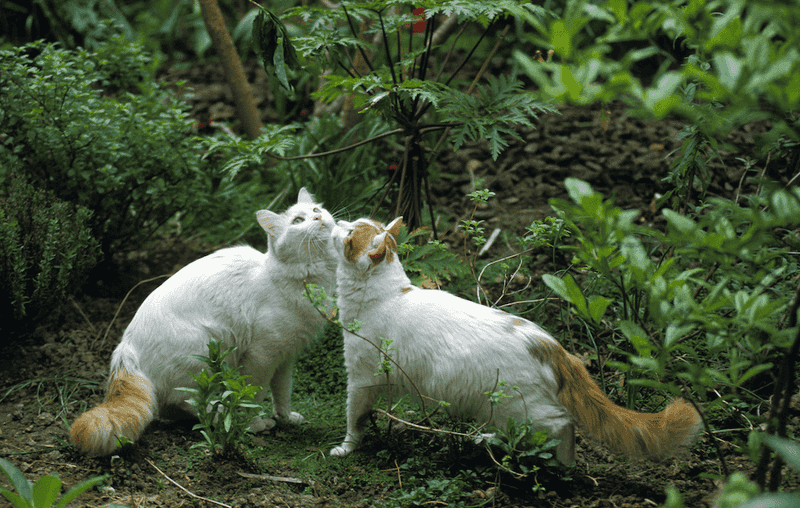
The Turkish Van, often called the “swimming cat,” is unique with its affinity for water. Its semi-long, water-resistant coat makes it an exceptional swimmer, a trait that sets it apart.
These cats are known for their robust and muscular physique, which aids in hunting and exploring. Their playful and energetic demeanor ensures they are always on the move, eager to discover new adventures.
With their striking looks and unique abilities, Turkish Vans are well-equipped for various wild environments, showcasing their versatility and adaptability.
Singapura Cat
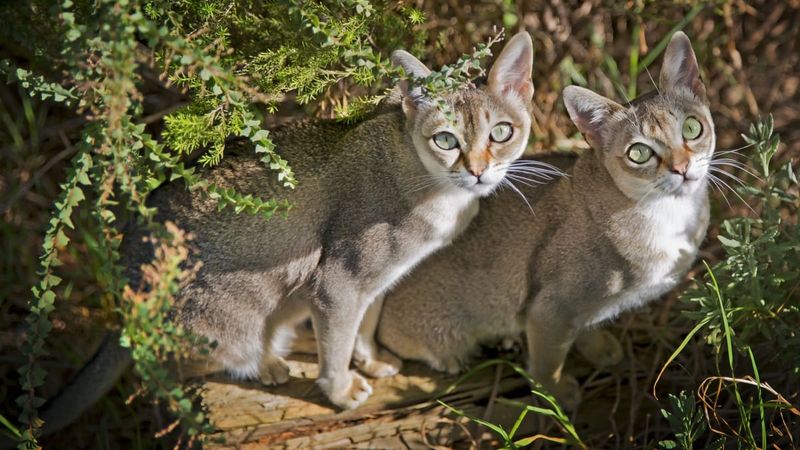
Considered one of the smallest cat breeds, the Singapura packs a punch with its muscular build and lively spirit. Originating from the streets of Singapore, these cats have adapted exceptionally well to urban environments.
Their small size and quick reflexes make them excellent climbers, able to navigate tall trees and buildings with ease. The Singapura’s keen hunting instincts allow them to catch rodents and insects, thriving in bustling cityscapes.
Despite their tiny stature, they possess a bold and curious nature, which aids them in surviving and exploring their surroundings confidently.
Ocicat
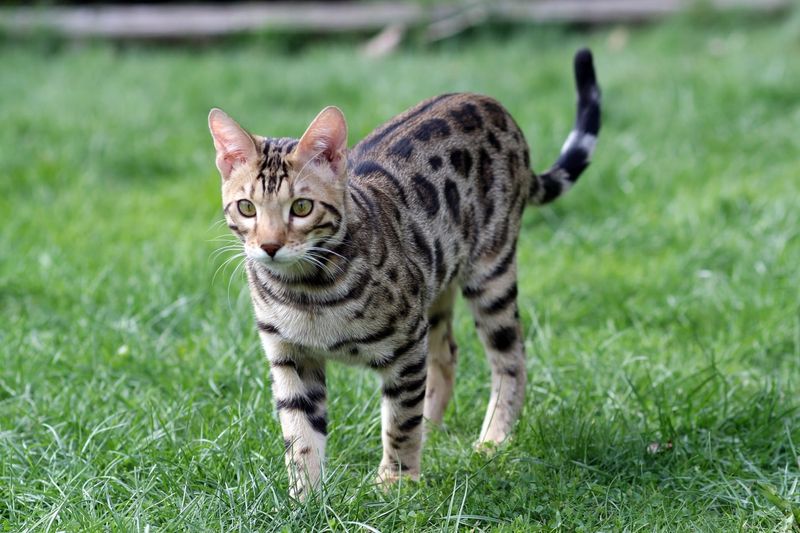
The Ocicat, despite its wild appearance, is a domesticated breed known for its courage and strength. Its muscular build and distinctive coat patterns are reminiscent of wild ocelots.
These cats are highly intelligent and curious, traits that serve them well in explorative ventures. Their playful nature is balanced by a strong survival instinct, making them proficient hunters.
With a penchant for social interaction, Ocicats can adapt to various environments. They are living proof that domestication and wild instincts can coexist harmoniously.
Chausie
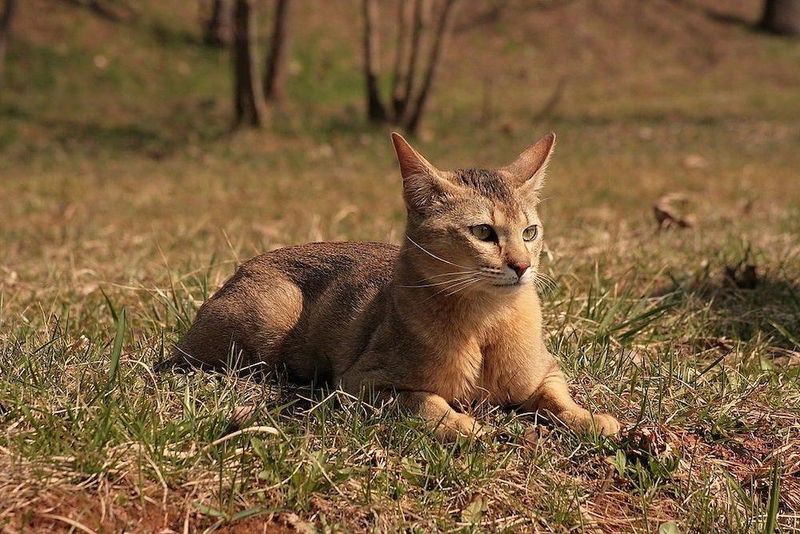
Chausies are a domestic breed with wild roots, known for their incredible speed and agility. They have a striking resemblance to jungle cats, with elongated bodies and keen senses.
Their powerful limbs and sharp instincts make them exceptional hunters. Despite their wild heritage, Chausies are affectionate and loyal, often forming strong bonds with humans.
These cats thrive in environments where they can explore and hunt. Their ability to adapt to various conditions highlights their resilience and wild spirit.
American Bobtail
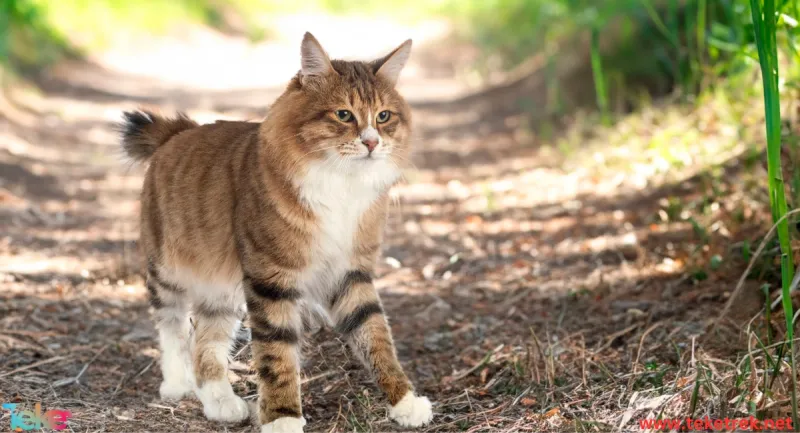
The American Bobtail, with its distinct short tail, exudes an aura of rugged charm. This breed is renowned for its hunting prowess and intelligence.
Their playful and adventurous nature makes them excellent explorers. The Bobtail’s muscular build and acute senses equip it for various terrains, whether forests or open fields.
Despite their tough exterior, these cats have a loving disposition, often forming deep connections with their human companions. The American Bobtail is a testament to the harmony between wild instincts and domestic life.
Pixie-bob
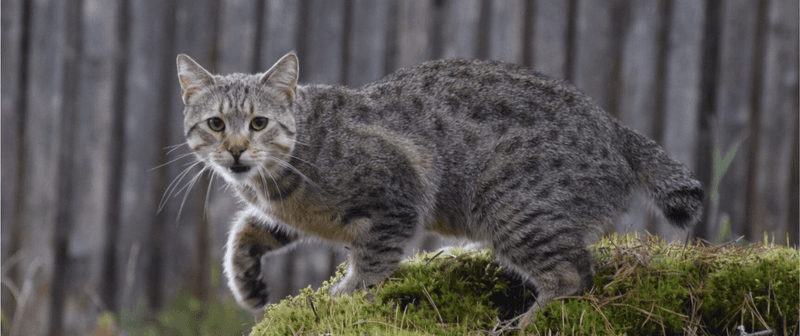
Pixie-bobs, with their tufted ears and bobbed tails, resemble miniature wildcats. Their robust physique and playful demeanor reflect their adventurous spirit.
These cats are known for their sociable nature, often enjoying the company of humans and other animals. Their intelligence and curiosity drive them to explore, making them adept at navigating the wild.
They possess a gentle yet bold personality, thriving in environments that challenge their instincts. Pixie-bobs are a delightful mix of wild appearance and affectionate personality.
Manx

The Manx, famous for its taillessness, is a breed that thrives on agility and speed. Its powerful hind legs make it an excellent jumper, ideal for exploring rugged terrains.
Known for their playful and energetic nature, Manx cats are always ready for adventure. Their keen hunting abilities and strong survival instincts make them formidable in the wild.
Despite their wild traits, they are affectionate and social, often bonding closely with their families. The Manx is a perfect blend of domestic charm and wild resilience.
Sokoke
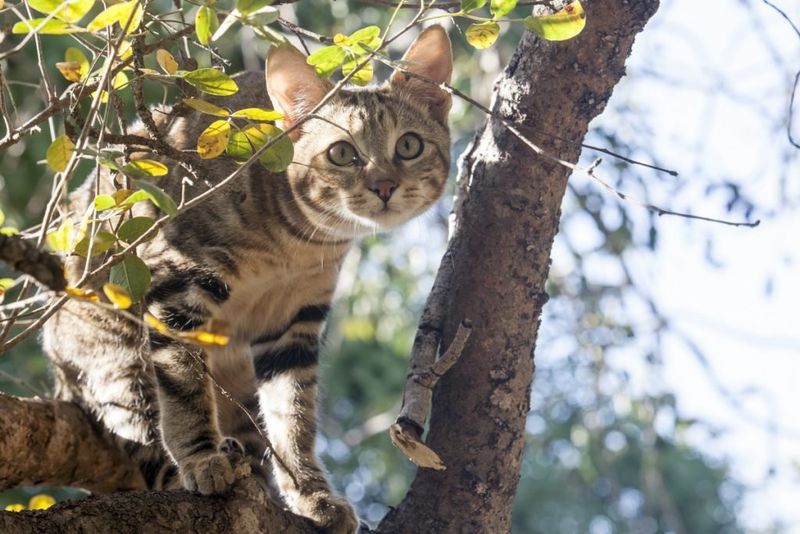
The Sokoke, originating from the forests of Kenya, is a true testament to wild beauty. Its unique coat pattern provides excellent camouflage in dense vegetation.
Known for their athleticism and agility, Sokokes are adept climbers and hunters. Their curious and independent nature drives them to explore and conquer new challenges.
Despite their wild origins, Sokokes are social and enjoy interacting with humans. They embody the perfect balance between wild independence and domestic affection, thriving in both worlds.
Japanese Bobtail

The Japanese Bobtail, with its distinctive stubby tail, is a symbol of good luck and fortune. This breed is known for its lively and engaging personality.
Their elegant, muscular bodies enable them to perform acrobatic feats with ease. These cats are natural hunters, with instincts honed over centuries.
Despite their playful demeanor, they possess a strong sense of independence, allowing them to thrive in various environments. The Japanese Bobtail is a delightful mix of cultural significance and wild prowess.
Korat
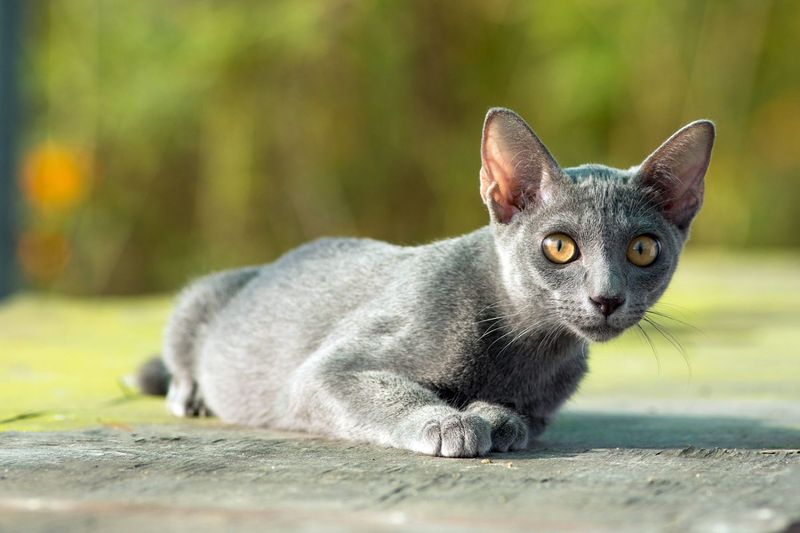
The Korat, with its striking silvery-blue coat, hails from the rainforests of Thailand. Known for its keen senses and alert nature, this breed is always aware of its surroundings.
Their powerful limbs and agility make them adept hunters, capable of navigating dense foliage. Korats are known for their intelligence and curiosity, often exploring new territories with enthusiasm.
Despite their wild traits, they form strong bonds with their human companions. The Korat represents a harmonious blend of wild instincts and domestic affection.
Chartreux
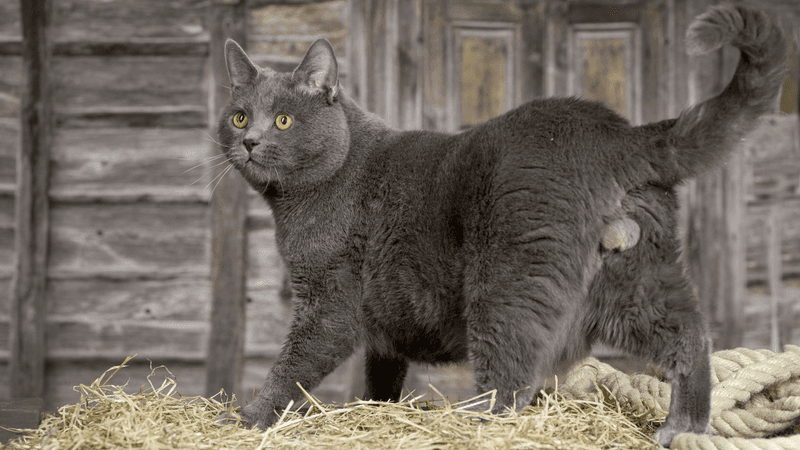
The Chartreux, with its plush blue-grey coat, is a breed shrouded in history. Known for their quiet demeanor and hunting prowess, these cats were once companions of French monks.
Their robust bodies and swift reflexes make them excellent hunters, adept at catching rodents or birds. Despite their ancient lineage, they possess a gentle and affectionate nature.
The Chartreux is a perfect example of how wild instincts and domestic charm can coexist, thriving in both rural and urban environments.
Highlander
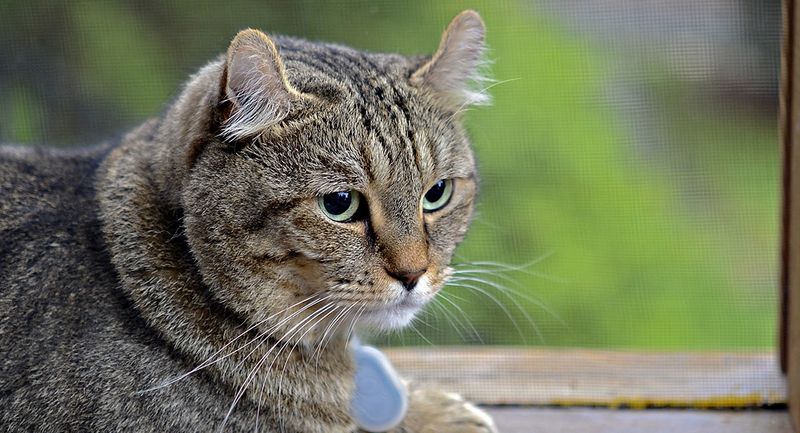
Amid rugged terrains, the Highlander stands out with its tufted ears and strong build, reminiscent of an untamed spirit. This breed is not only striking in appearance but also possesses a keen sense of alertness that makes it a formidable survivor in the wild.
With its powerful legs and muscular frame, the Highlander is adept at climbing and leaping, embracing the challenges of a wilderness habitat. Its sharp instincts and bold demeanor contribute to its remarkable self-sufficiency.
Did you know? The Highlander’s unique look, including its curled ears, can be traced back to American Lynx ancestry, enhancing its wild appearance.

